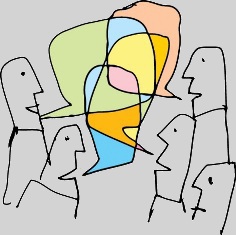Session 5
Session 5
This class was dinamic because the classmates were able to show their class based on the method that had been assigned, I could observe that some activities involve the most students to participate, so i really liked some activities. I think that learning process of a second language is a path where is shaped for the right curriculum, activities, homework, and finally a good method for developing each class as well as a teacher who gives a meaningful teaching. There are many methods that can be mixed up by giving a class but there are others that is up to the level of the English that students have.
1. Presentation, Practice, and Production (PPP)
- Presentation: An introductory activity such as a warm up or a lead-in, which in activity intended to raise students´ interest in the topic some activities in this stage are: brainstorming, choral repetition, Placing word into context.
- Practice: Teachers provides opportunities for students to practice the learnt items in a controlled way through restricted exercises.
- Production:Students use what they have been taught in real situation by interacting each other.

2. Engage, Study, Activate (ESA) 
- Engage: in this step, teachers must have the attetion of the students and involve emotionally. the activities to perform can be: games, stoy telling, music and pictures,
- Study: teachers can use a variety of styles to present the information, focusing on grammar, vocabulary or pronunciation, Styles includes the materials that the teacher gives and the way to work of the students.
- Activate: refers to the use or practice what they have learned. in others words, students have to show the knowledge of the class by performing certain activities such as; role plays. debating, story and discussion.

3. Situational Language Teaching
Situational language teaching method focus on speaking ability by british applied linguistic 1930-1960. It is an approach developed by Harold Palmer and A.S Hornsby in the 1930s. The theory of learning underlying situation language teaching is behaviorism, addressing more the processes than the conditions of learning.
"When we acquire our primary language, we do so by learning how to behave in situations, not by learning rules what to say. (M.A.K Halliday1964)
There are two main contents: grammar control and vocabulary control.
- Begins with the spoken language. Material is taught orally before it is presented in written form.
- The target language is the language in the class.
Procedures: pronunciation, revision, Presentation, oral practice, reading material or written exercise.
Design: types of learning and teaching activities which use of: real objects, pictures, which together with action gestures,
4. Observe-Hypothesize- Experiment (OHE)
The Hypothesize and experimenting stages involve activities suach as identifying, sorting and matching and their aim is to encourage curiosity about language and among learners. We as teachers need to take a longer term view of learning and cannot expect to limit language to a single structure and presume this has been learnt by the end of the class.


Comentarios
Publicar un comentario